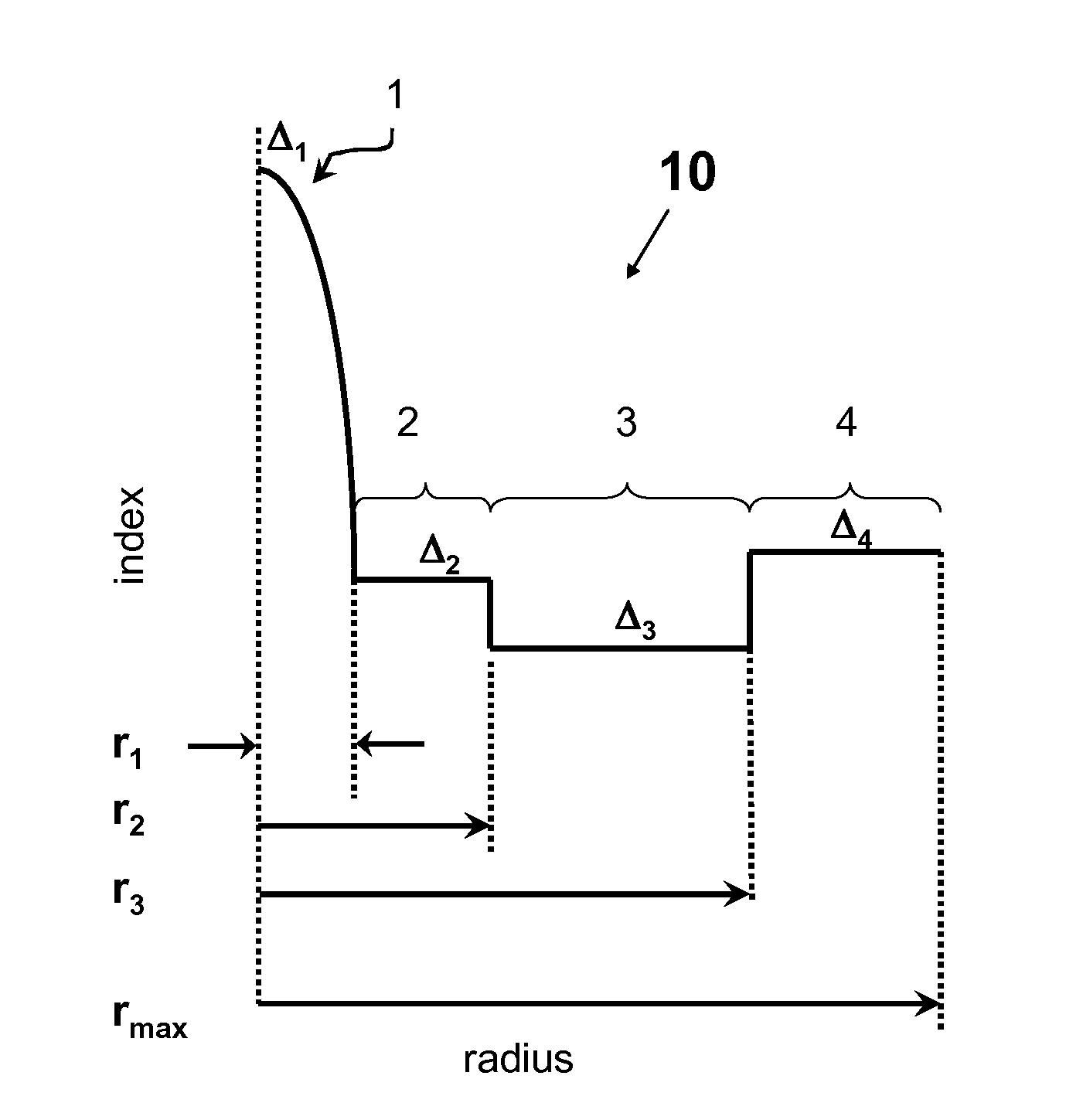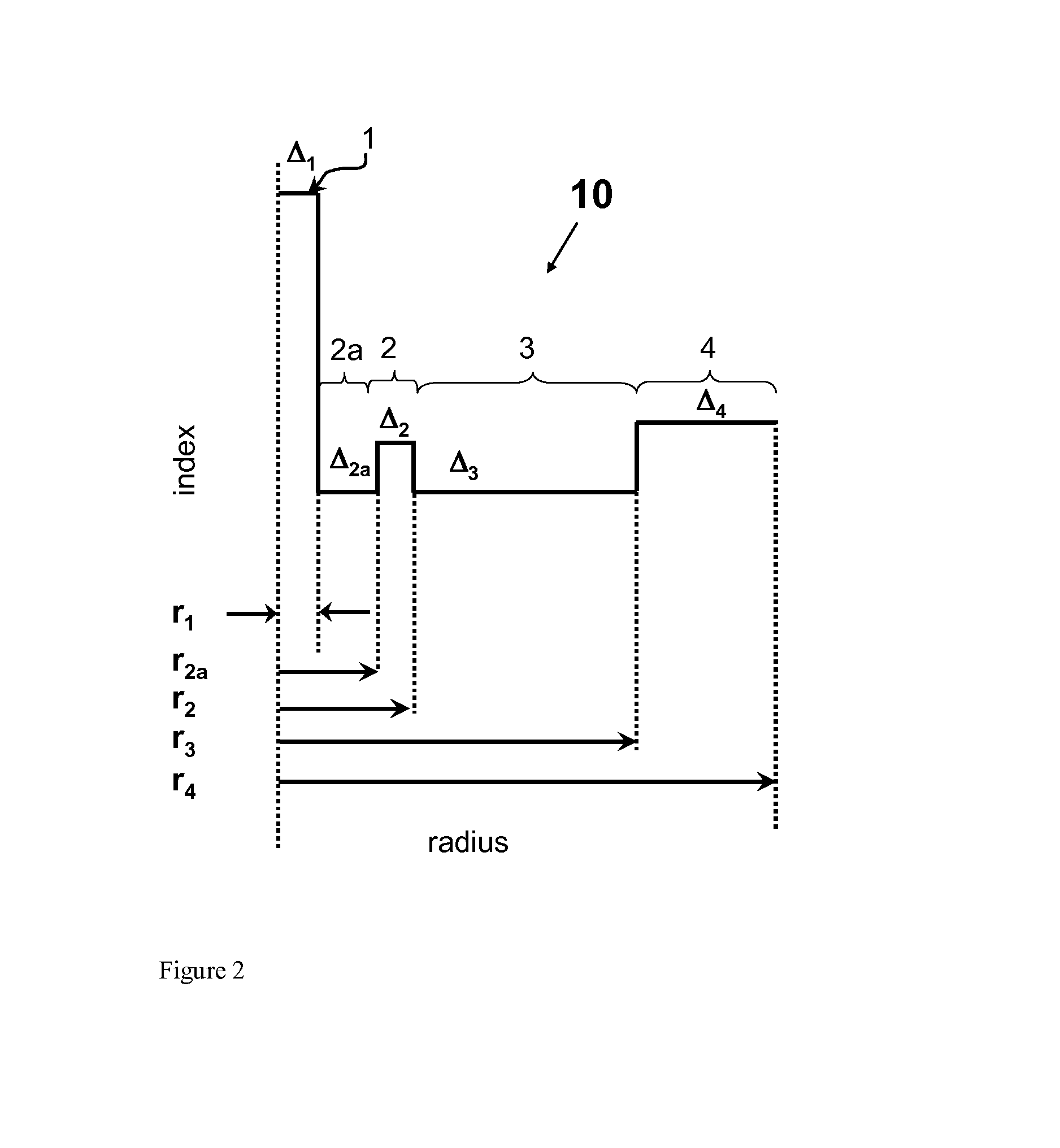Low bend loss optical fiber
a technology of optical fibers and microbends, applied in the direction of optical waveguide light guides, glass optical fibres, instruments, etc., can solve the problems of high cost of coatings, difficult in some optical fiber designs to achieve simultaneous low bend loss, and inconvenient installation of coatings
- Summary
- Abstract
- Description
- Claims
- Application Information
AI Technical Summary
Benefits of technology
Problems solved by technology
Method used
Image
Examples
examples 1-23
Fiber Examples 1-23
[0049]Tables 1A-1C below list characteristics of modeled illustrative examples 1-23 having a refractive index profile similar to that shown in FIG. 1. In particular, set forth below for each example is the refractive index delta Δ1max, alpha1, and outer radius R1 of the central core region 1, refractive index delta Δ2, alpha2, and outer radius R2 inner cladding region 2, refractive index delta Δ3 and volume V3 of the inner cladding region 3, refractive index delta Δ4, R4 and volume V4 of the outer cladding region 4, which is calculated between inner radius R3 of outer cladding region 3 and a radial distance of 30 microns (and between the refractive index Δ4 and that of Δ3). Also set forth are r1 / r2, theoretical cutoff wavelength in nm of LP01 and LP11 modes, mode field diameter in microns at 1310 nm, chromatic dispersion at 1310 nm in (ps / nm / km), dispersion slope at 1310 nm in (ps / nm2 / km), zero dispersion wavelength, λ0 in (nm), mode field diameter at 1550 nm in m...
examples 24-25
Fiber Examples 24-25
[0055]Table 2 below list characteristics of illustrative examplary embodiments 24-25 with relative refractive index profile similar to that shown in FIG. 2. Optical fibers of FIG. 2 are similar to those of FIG. 1 in that that they have a trench (region 3) offset from the core (region 1) with the inner cladding region 2 situated there between. However, in FIG. 2 embodiments the fibers also comprise region 2A situated directly adjacent to the core and sandwiched between the core (region 1) and the inner cladding region 2. More specifically, FIG. 2 shows illustrates the refractive index profile that has 5 segments: a central core (region 1) and four surrounding cladding layers (inner cladding layers 2A, 2 and 3 and an outer cladding 4 that in these embodiments with the refractive index delta Δ4 (i.e., the overclad). The core can have a step index or an alpha profile. The first layer surrounding the core can have a flat index or an alpha profile. The relative refract...
PUM
 Login to view more
Login to view more Abstract
Description
Claims
Application Information
 Login to view more
Login to view more - R&D Engineer
- R&D Manager
- IP Professional
- Industry Leading Data Capabilities
- Powerful AI technology
- Patent DNA Extraction
Browse by: Latest US Patents, China's latest patents, Technical Efficacy Thesaurus, Application Domain, Technology Topic.
© 2024 PatSnap. All rights reserved.Legal|Privacy policy|Modern Slavery Act Transparency Statement|Sitemap



